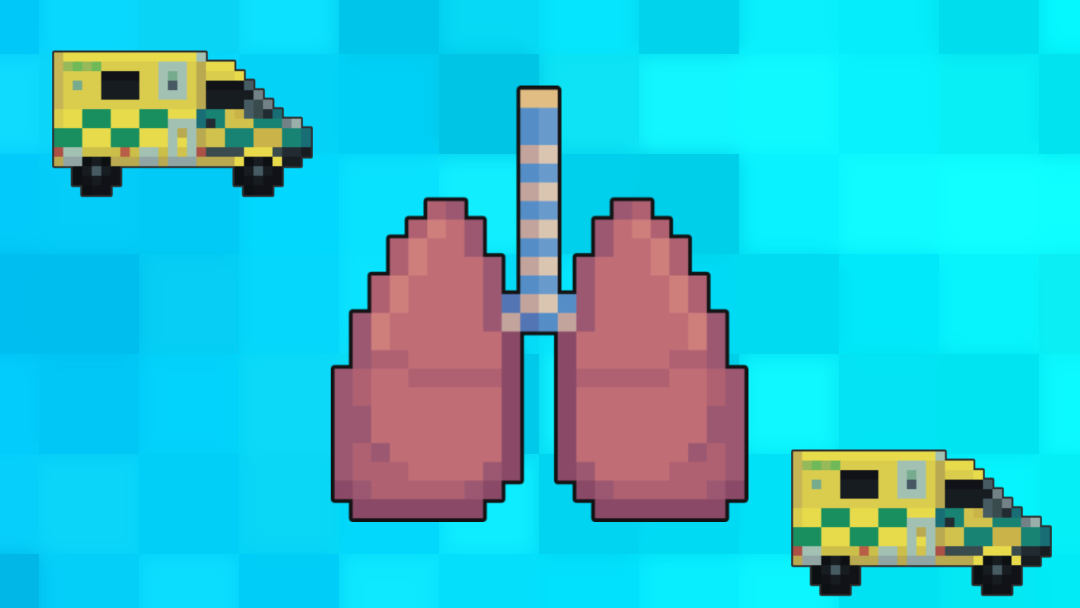- 📖 Geeky Medics OSCE Book
- ⚡ Geeky Medics Bundles
- ✨ 1300+ OSCE Stations
- ✅ OSCE Checklist PDF Booklet
- 🧠 UKMLA AKT Question Bank
- 💊 PSA Question Bank
- 💉 Clinical Skills App
- 🗂️ Flashcard Collections | OSCE, Medicine, Surgery, Anatomy
- 💬 SCA Cases for MRCGP
To be the first to know about our latest videos subscribe to our YouTube channel 🙌
This adult choking OSCE guide aims to provide an overview of providing first aid to the adult choking patient (foreign body airway obstruction). The guide is based on the Resuscitation Council (UK) guidance and is intended only for students preparing for their OSCE exams and not for patient care.
Ensure personal safety
Before approaching any emergency situation, you should ensure that it is safe to do so.
Look for hazards in the environment which may put you at risk.
Identification of the choking patient
Suspect choking if a person becomes suddenly unable to talk. This may also be associated with gagging/trying to cough or clutching at their throat. They may attempt to “signal” that they are choking.
Contextual and environmental clues may aid in the identification of choking. For example, if a person has been eating, or a child has been playing with small toys/bringing things to their mouth.
Choking and eating
The majority of choking cases are associated with eating. Choking is more common at the extremes of age (age <5 and >90).
Encourage them to cough
Choking can cause people to panic, so try to keep them calm. Speak loudly and clearly to gain their attention, and ask “can you cough?”.
If the cough is effective (indicating partial airway obstruction), encourage the patient to cough to clear the obstruction.
If the cough is ineffective (indicating severe airway obstruction), call for emergency medical help (999), and give back blows and abdominal thrusts.
Perform back blows
1. Lean the patient forward
2. With the heel of your hand, apply a firm blow to their back, between their shoulder blades
3. Repeat this up to five times, unless the obstruction clears
4. If the obstruction clears, re-assess the patient
5. If the obstruction does not clear, move on to giving abdominal thrusts
Give abdominal thrusts
1. Lean the patient forward
2. Clench the fist of one hand, and place it between the umbilicus and the ribcage
3. Place the other hand over your fist
4. Pull sharply inwards and upwards
5. Repeat this up to five times, unless the obstruction clears
6. If the obstruction clears, re-assess the patient
7. If the obstruction does not clear, continue alternating between five back blows and five abdominal thrusts
If the patient becomes unresponsive
If at any point the patient becomes unresponsive, immediately start basic life support. Performing chest compressions may dislodge the foreign body.
Update emergency medical services that the patient is now unresponsive and CPR is being started.
If the obstruction clears
Once the obstruction is clear of the airway, ask the patient to spit out any remaining debris. Encourage them to take slow, deep breaths.
Any patient who has needed abdominal thrusts for choking requires a medical assessment (usually by attending the emergency department) due to the risk of internal injury (e.g. rib fractures, oesophageal rupture). They may also need a chest X-ray.
Wait with the patient until the ambulance arrives.
Handover
When the ambulance arrives, hand over the patient using SBAR format.
Editor
Dr Chris Jefferies
References
- Resuscitation Council (UK). Adult Basic Life Support Guidelines 2021. Available from: [LINK]
- Pavitt MJ, Nevett J, Swanton LL, et al. London ambulance source data on choking incidence for the calendar year 2016: an observational study. BMJ Open Resp Res 2017;4:e000215.




